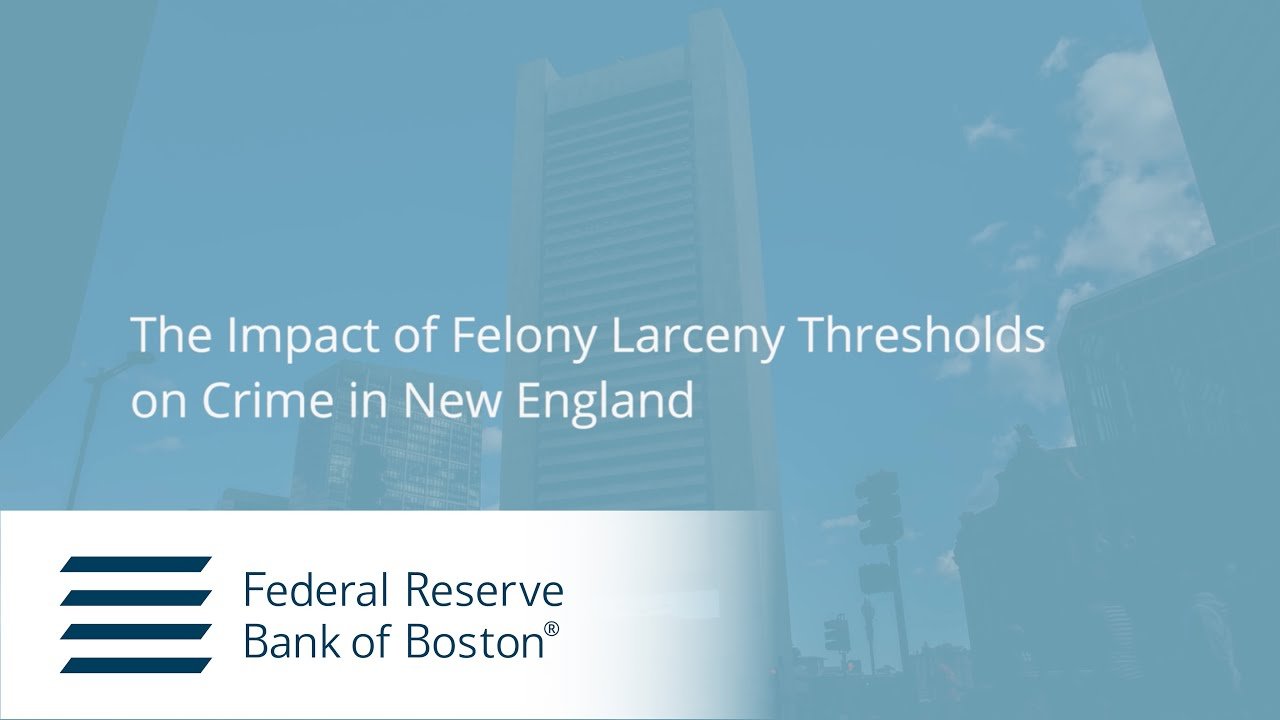by Osborne Jackson and Riley Sullivan
Criminal justice reform has been a high-priority policy area in New England and the nation in recent years. States are generally seeking legislation that would help reintegrate ex-offenders into society while still prioritizing the welfare of all members of the public and the achievement of fiscal goals. The research findings presented in this report indicate that raising felony larceny thresholds—that is, increasing the dollar value of stolen property at or above which a larceny offense may be charged in court as a felony rather than a misdemeanor, a policy adopted by three New England states over the last decade—seems to balance these objectives. Policymakers interested in criminal justice reform should consider incorporating felony larceny threshold increases into the suite of policy changes implementing such reform.
When assessing larceny incidents as a whole, this report concludes that enacting higher felony larceny thresholds does not lead to an escalation of crime in the short run. Even upon considering the subset of larceny incidents where escalation is most likely to occur and where analysis is potentially not affected by other concurrent changes in larceny penalties, this report finds only a small, 2 percent short-run increase in the intensity of larceny crime (value of stolen property) and still no increase in the amount of larceny crime (rate of occurrence).
New England Public Policy Center, Federal Reserve Bank of Boston. 2020, 29pg


